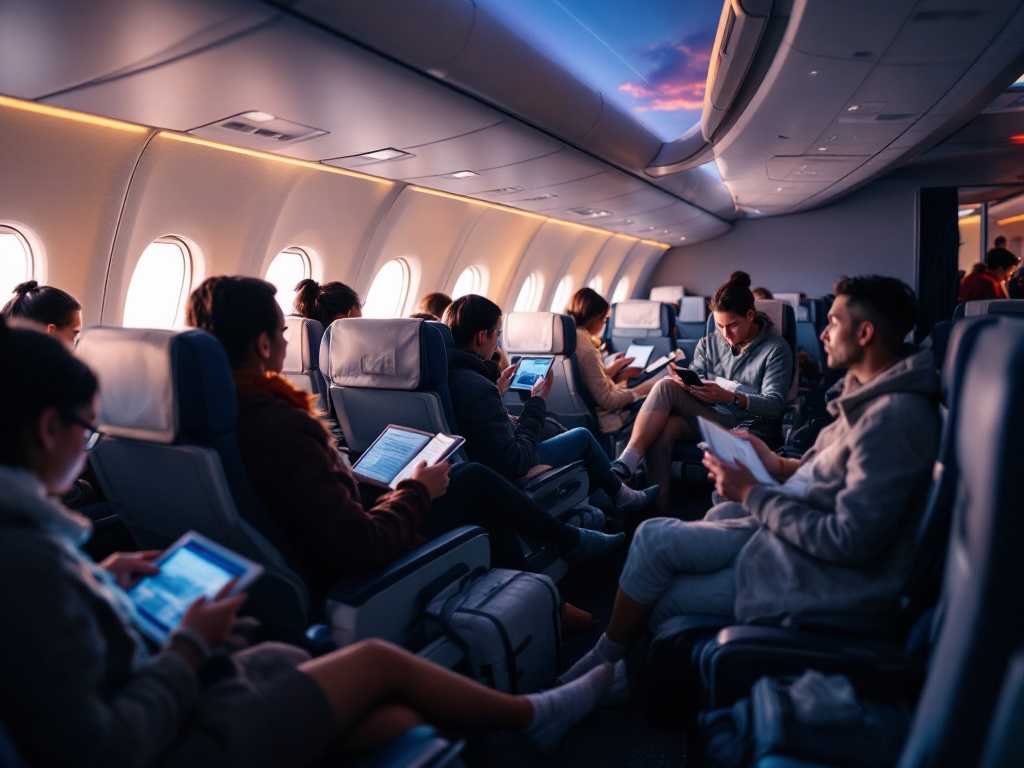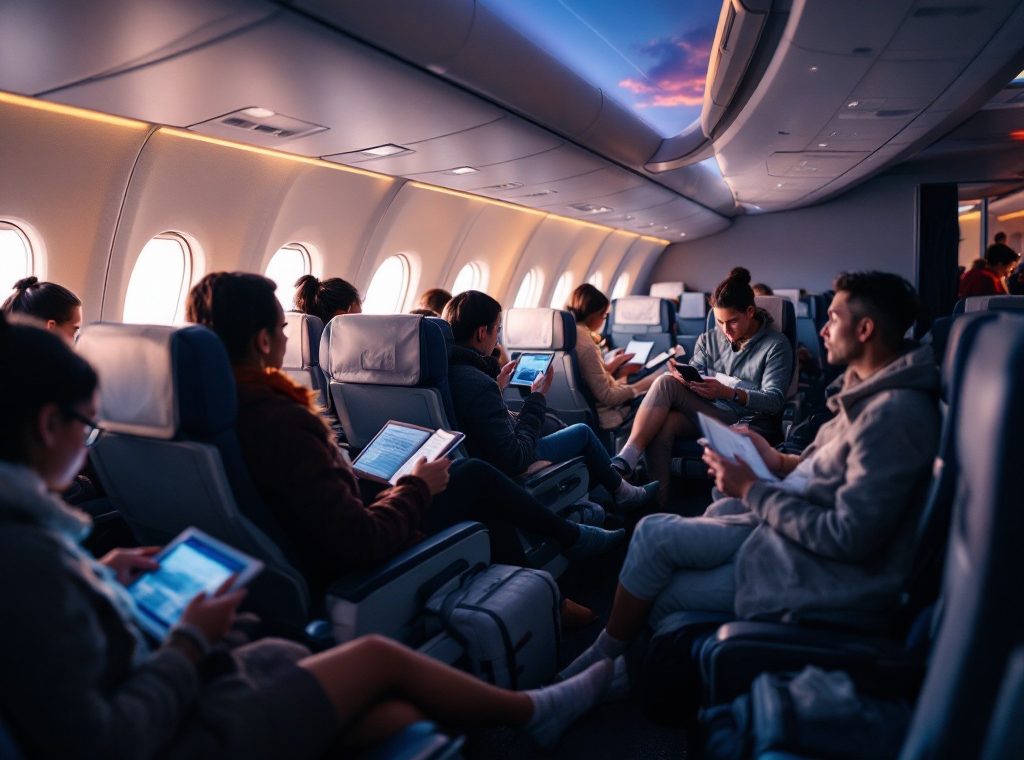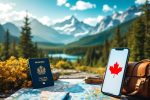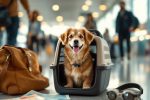Preparing for Long-Haul Flights: Essential Tips
Dreading that long-haul flight? Discover insider tips to make your journey a breeze! Learn how to snag the best seats by booking early and using airline seat maps. Explore smart packing strategies for maximum comfort, including the benefits of compression socks and layered clothing. We’ll also reveal how to manage cabin pressure, stay hydrated, and minimize jet lag. Fly comfortably and arrive refreshed – read on to unlock the secrets to a smoother, more enjoyable long-haul experience.
Important information

- Book flights early to select your preferred seat. Window seats are great for sleeping, while aisle seats offer easy access. Check the airline’s seat map for extra legroom or quieter zones.
- Dress in loose, comfortable layers to adapt to changing cabin temperatures. Compression socks can improve circulation and reduce leg swelling.
- Pack essentials like a travel pillow, eye mask, noise-canceling headphones, reusable water bottle, and toiletries. A portable charger is vital for electronic devices.
- Stay hydrated by drinking plenty of water and avoid excessive caffeine or alcohol. Pack healthy snacks to supplement airline meals.
- Minimize jet lag by adjusting your sleep schedule a few days before departure, changing your watch to the destination time zone upon boarding, and getting sunlight upon arrival.
Booking and Seat Selection for Long-Haul Flights
To secure the best seat on your next long-haul flight, book in advance. Window seats are ideal for sleeping, but if legroom is your priority, consider seats at the back of the plane, especially if there’s a chance they might remain unoccupied.
Consulting the airline’s seating chart is highly recommended. It often highlights seats with extra legroom and quieter zones, allowing you to choose the perfect spot for a comfortable journey.
Early Flight Booking for Best Seat Selection
Booking your flights in advance increases your chances of getting your preferred seat. A window seat offers a peaceful view and a place to rest. An aisle seat allows easy access. Booking early often lets you get premium seats with extra legroom or quieter spots, away from the main cabin. Online seat maps show the plane’s layout and can help you choose.
Choosing the Right Seat for Comfort
Enhance your flight experience by strategically selecting your seat. Boarding last, while potentially offering an empty row in the back of the plane, could mean limited overhead bin space. A window seat is ideal for uninterrupted sleep, minimizing disturbances.
- Benefit: Uninterrupted sleep.
- Minimizes: Disturbances.
Conversely, an aisle seat provides easy access to amenities and stretching room. For a quieter, darker journey, choose seats away from the galley and lavatories. Checking in early opens up better seat options, like the coveted exit row with extra legroom. Airline seating charts are valuable resources for finding quieter areas and spacious seats.
- Benefit: Easy access to amenities and stretching room.
- Quieter Journey Tip: Select seats away from galley and lavatories.
- Early Check-in Advantage: More seat choices, including exit row.
Upgrade Options for Extra Legroom
Looking for more legroom on your next flight? Consider these options:
- Premium Economy: enjoy extra legroom and other perks.
- Business/First Class: experience the ultimate in comfort and luxury.
- Preferred Seating (Economy): opt for bulkhead or exit row seats for increased legroom.
Contact your airline directly to check availability and pricing for these upgrades. Enhanced comfort, especially on long flights, can make a significant difference to your travel experience.
Packing and Dressing for Long-Haul Comfort
For a comfortable journey, pack smart. Choose loose, comfortable clothing like pants and shirts. Layering is key, so bring a light sweater or jacket to handle fluctuating cabin temperatures. A travel pillow will support your head and neck, while an eye mask and noise-canceling headphones can block out distractions for better sleep.
- A small toiletry bag with essentials like a toothbrush, toothpaste, moisturizer, lip balm, and hand lotion to combat the dry cabin air.
- Stay hydrated with a reusable water bottle.
- Bring healthy snacks to supplement airline meals.
On long flights, prioritize comfort with breathable clothing like leggings, sweatpants, and a t-shirt. Layering is crucial for adapting to temperature changes, and comfortable slip-on shoes are ideal. Packing a change of clothes will help you feel refreshed.
Consider compression socks to improve circulation and prevent swelling and discomfort in your legs during long periods of sitting. They’ll also keep your feet warm.
Packing Essentials for a Smooth Journey
Pack strategically for a comfortable flight. A travel pillow encourages rest, while a portable charger keeps devices powered. Stay hydrated with a reusable water bottle and refresh with essential toiletries packed in a smaller bag inside your carry-on. Keep your passport and wallet easily accessible. Packing cubes organize clothes and accessories efficiently. A compact carry-on suitcase helps avoid lost baggage. Comfortable, layered clothing is essential, as airplane temperatures fluctuate. Pack a change of clothes for unforeseen circumstances. Noise-canceling headphones minimize distractions. Don’t forget lip balm, a toothbrush and toothpaste, and hand sanitizer. A blanket or scarf offers extra warmth. Finally, ensure you have all the necessary travel documents.
Dressing Comfortably for Long-Haul Flights
For long flights, opt for loose, comfortable clothing made from breathable materials like cotton to maintain a comfortable temperature. Layering is also advisable, enabling you to adjust to changing cabin temperatures.
Pack comfortable shoes, as your feet may swell during the flight. This is crucial for your in-flight comfort.
The Importance of Compression Socks
Combat leg discomfort and swelling on long flights with compression socks. They improve circulation in your legs and feet, minimizing swelling and reducing cramps caused by cabin pressure. The added warmth enhances comfort, making even the longest journeys more bearable.
Managing Cabin Environment
Managing the cabin environment can greatly improve your comfort on long flights. The lower air pressure can cause earaches and sinus discomfort, so chew gum to equalize ear pressure. Varying cabin temperatures can also be a problem. Packing a blanket or scarf helps regulate your body temperature and adds comfort during these fluctuations. Staying hydrated is essential for overall well-being on a long journey.
Managing Air Pressure and Cabin Environment
Experiencing ear popping or sinus pressure during flights is normal due to lower cabin pressure. Here’s how to alleviate the discomfort: chew gum, swallow frequently, or use a nasal spray to equalize pressure. Staying hydrated by drinking plenty of water also helps.
Using a Blanket or Scarf for Temperature Control
Sudden drops in cabin temperature can make a blanket or large scarf invaluable for added warmth and comfort. They can even serve as makeshift pillows.
Health and Comfort During Long Flights
Hydration and Healthy Eating
Long flights can be dehydrating, which worsens jet lag and increases the risk of blood clots. Combat this by drinking plenty of water and limiting caffeine and alcohol. Carry a reusable water bottle to refill throughout your journey. A balanced pre-flight meal and healthy snacks will help maintain your energy.
Movement and Stretching
Don’t forget to move around and stretch during the flight. Short walks improve circulation and reduce stiffness.
In-Flight Comfort and Relaxation
For in-flight comfort, consider relaxation techniques, a neck pillow for support, and an eye mask and earplugs to block out light and noise, promoting relaxation and sleep. Deep breathing or meditation can alleviate stress. Listening to calming music or audiobooks can also be beneficial. Adjust your seat and use a blanket or pillow to enhance your comfort.
Minimizing Jet Lag
To minimize jet lag, adjust your sleep schedule to match your destination’s nighttime. Change your watch to the new time zone upon boarding. Exposure to sunlight at your destination regulates your internal clock. Avoid large meals, excessive caffeine, and alcohol before bed. A relaxing bedtime routine will promote better sleep and help you adjust to the new time zone.
Staying Hydrated and Maintaining Health
Staying hydrated is key for a comfortable flight experience. The dry air on long flights can lead to headaches, fatigue, and dry skin. Bring an empty reusable water bottle through security and fill it up at a water fountain. Sip water consistently throughout your flight, even if you don’t feel thirsty. Avoid dehydrating drinks like coffee or alcohol. Instead, try hydrating snacks like fruit. A good moisturizing lotion can also combat dry skin.
Bring an empty reusable water bottle.
Fill it up at a water fountain after passing security.
Sip water consistently throughout your flight.
Avoid extra coffee or alcoholic drinks.
Try hydrating snacks like fruit.
Use a good moisturizing lotion to combat dry skin.
In-Flight Comfort and Relaxation Techniques
Enhance your next flight with simple relaxation techniques.
- Essential oils can significantly boost your comfort.
- Mindfulness practices can contribute to a more relaxed flight.
- Deep breathing exercises promote relaxation and a more enjoyable travel experience.
Adjusting Your Sleep Pattern to Minimize Jet Lag
Start adjusting your sleep schedule to your destination’s time zone a few days before your trip.
Upon boarding the plane, change your watch immediately to reflect the destination time.
Stay hydrated during the flight by drinking plenty of water.
Limit your intake of alcohol and caffeine during the flight, as they can dehydrate you and disrupt your sleep.
Get some natural sunlight after arriving to help reset your internal clock and adjust to the new time zone.
Food and Entertainment Options
Pack healthy snacks like nuts, dried fruit, and protein bars to make your long flight more enjoyable.
Download movies, music, or podcasts to your devices before you leave and bring a portable charger to keep them powered up.
Bring an eye mask and earplugs to help you sleep and adjust to your destination’s time zone more easily.
Stay hydrated by drinking plenty of water and limiting caffeine and alcohol.
Bringing Your Own Snacks and Nourishment
Pack your own snacks to stay energized and control your diet. Excellent choices include nuts, dried fruit, granola bars, and whole-grain crackers. These provide sustained energy and prevent sugar crashes. Avoid salty, heavy foods, as they can dehydrate you. For transport, reusable water bottles and mason jars are both practical and eco-friendly.
Utilizing Tech Gadgets and Entertainment
Enhance your in-flight entertainment and minimize distractions with noise-canceling headphones or earplugs. Download movies, TV shows, podcasts, or audiobooks before your flight. A lightweight e-reader, pre-loaded with numerous titles, offers a great alternative to bulky books. Don’t forget a portable charger to keep your devices powered up. For a more immersive viewing experience, consider a tablet with its larger screen.


















